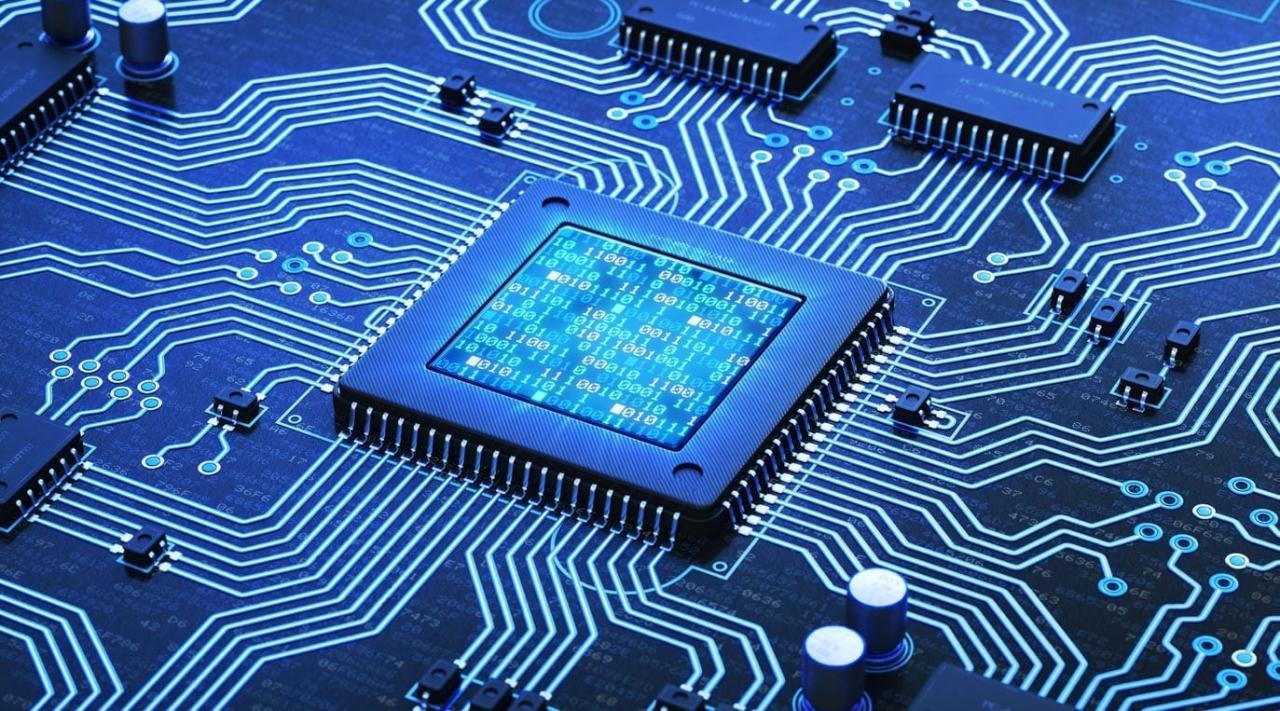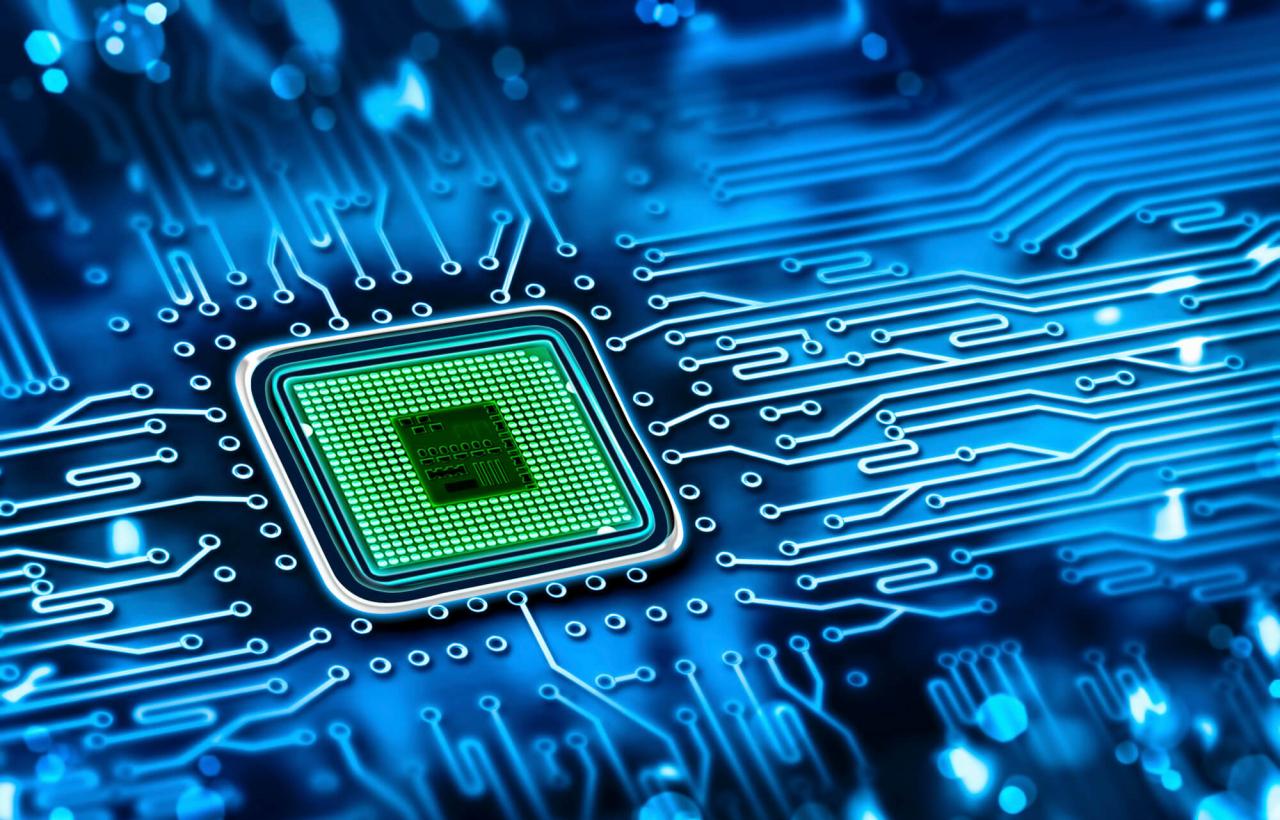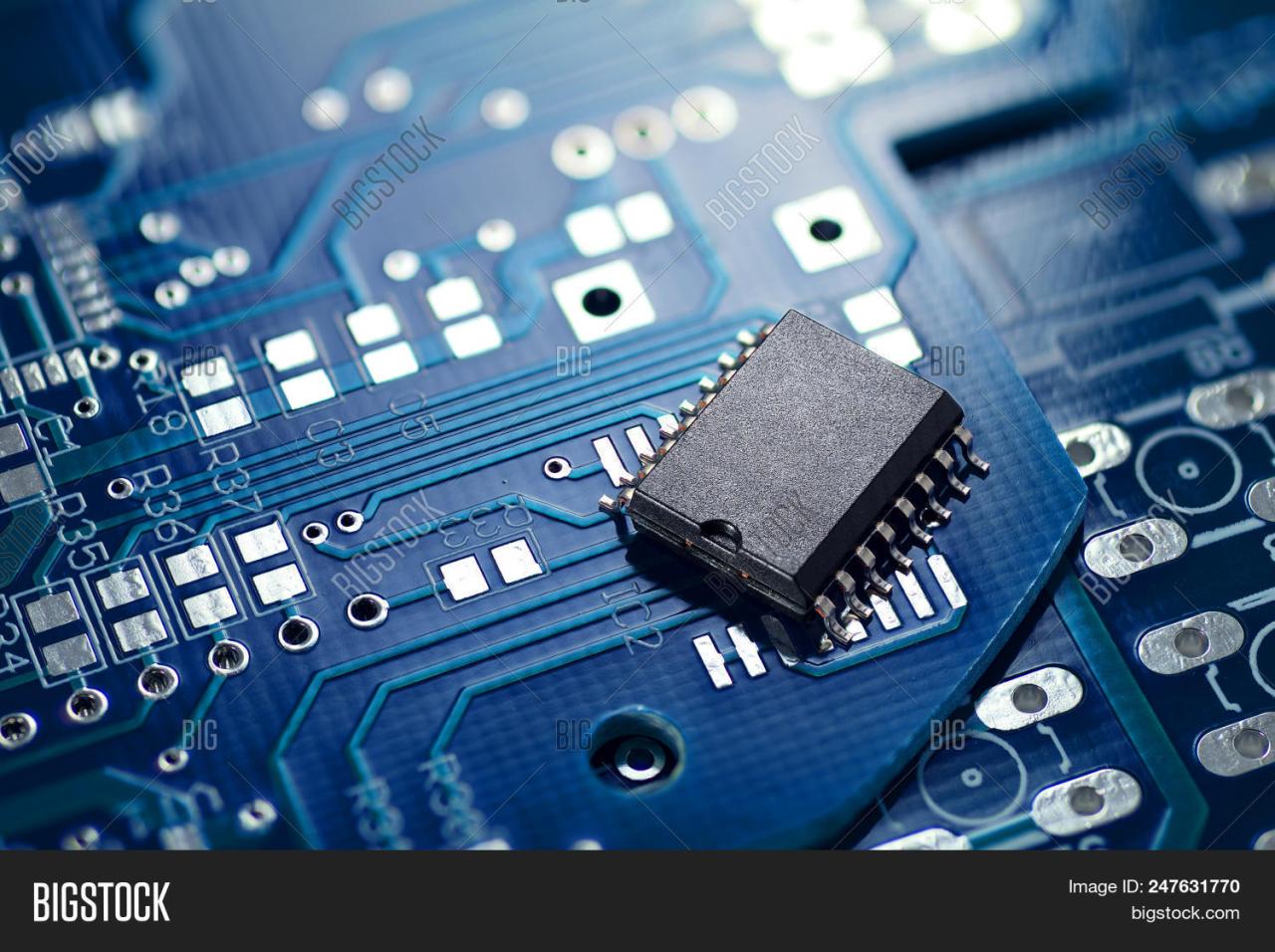Chip iPhone stands at the forefront of mobile technology, marking a significant evolution in smartphone performance and user experience. From the very first iPhone to today’s advanced models, Apple’s A-series chips have consistently pushed the boundaries of what a smartphone can achieve. Each iteration introduces enhancements that not only boost efficiency but also redefine how users interact with their devices.
The journey through the history of chip technology in iPhones showcases key features that have made these devices powerful tools. With impressive specifications and capabilities, each chip has played a crucial role in transforming the iPhone into a multifaceted device that combines speed, efficiency, and advanced functionalities, setting new standards in the smartphone market.
Chip Technology in iPhone Models

The evolution of chip technology in iPhones has been a remarkable journey, showcasing Apple’s commitment to innovation and performance. From the introduction of the first iPhone in 2007, which featured a simple ARM-based processor, to the sophisticated A-series chips in the latest models, Apple’s advancements in chip design have significantly enhanced the capabilities of its smartphones.
The A-series chips have been pivotal in defining the iPhone experience. Each iteration has brought improvements in processing power, graphics performance, and energy efficiency. The gradual evolution from the A4 to the latest A15 and A16 chips reflects Apple’s ability to integrate advanced technology into compact form factors, optimizing both performance and battery life. These advancements not only boost the speed of applications but also enhance gaming experiences, photography capabilities, and machine learning functions on the device.
Key Features of A-series Chips
The A-series chips are known for several key features that distinguish them from competitors. Understanding these features provides insight into how they contribute to the iPhone’s functionality.
– High Performance: Each new generation of A-series chips offers significant performance boosts, enabling faster app launch times, smoother multitasking, and enhanced gaming experiences. For instance, the A14 Bionic chip introduced a 6-core CPU and a 4-core GPU, pushing the boundaries of mobile processing.
– Improved Energy Efficiency: With each iteration, Apple has focused on enhancing energy efficiency, allowing users to enjoy more extended battery life. The transition to a 5nm process technology in the A14 chip exemplifies this shift, resulting in lower power consumption without compromising performance.
– Advanced Neural Engine: The incorporation of a dedicated Neural Engine has revolutionized machine learning tasks on iPhones. The A15 chip, for example, features a 16-core Neural Engine capable of executing up to 15.8 trillion operations per second, enhancing features like real-time photo processing and improved Siri responses.
– Integrated Graphics: The A-series chips include advanced graphics processing units (GPUs) that support high-quality gaming and immersive visual experiences. The A15 chip’s GPU offers up to 30% faster graphics performance than its predecessor, making it a strong choice for mobile gamers.
– Security and Privacy Features: Each A-series chip includes a Secure Enclave, which protects sensitive information like Face ID data and Apple Pay transactions. This focus on security reflects Apple’s commitment to user privacy.
Impact of Chip Performance on iPhone Functionality
The performance of the A-series chips has a profound impact on the overall functionality of iPhones. A powerful chip directly correlates with a seamless user experience, influencing everything from application responsiveness to long-term software support.
– App Performance: Thanks to the robust processing capabilities, apps run smoothly with minimal lag. Users experience faster load times and enhanced performance across various applications, including demanding games and productivity tools.
– Camera Technology: Chip performance also enhances the camera experience on iPhones. Advanced image processing capabilities allow for improved low-light photography, smart HDR features, and real-time video analysis, making the iPhone a preferred choice for photography enthusiasts.
– Software Longevity: The powerful A-series chips ensure that older iPhone models remain capable of running the latest iOS updates for several years, extending the device’s lifecycle. For example, devices powered by the A12 chip can still efficiently run the latest iOS, providing users with a sense of longevity and value.
– User Experience: A seamless interaction with the device is crucial for user satisfaction. High-performance chips facilitate smooth transitions, quick responses to touch, and overall fluid navigation, contributing to an enhanced user experience.
– Innovations in Augmented Reality (AR): The increasing capabilities of A-series chips have paved the way for rich AR experiences. The A12 chip introduced features like ARKit, allowing developers to create immersive AR applications that leverage the iPhone’s processing power to render virtual objects in real time.
Comparison of iPhone Chips: Chip Iphone

The evolution of iPhone chips represents a monumental leap in smartphone technology, with each iteration designed to enhance performance, efficiency, and user experience. The A-series chips, developed by Apple, are at the heart of this advancement, directly impacting everything from processing power to battery life. Understanding the specifications and performance metrics of these chips is essential for consumers looking to make informed choices about their devices.
The performance of an iPhone chip significantly influences not only the speed and capabilities of the device but also its energy consumption and overall efficiency, leading to longer battery life and improved performance in demanding applications. Below is a comparative table detailing key specifications and performance metrics of major iPhone chips.
Specifications and Performance Metrics
The following table summarizes the specifications and performance metrics of several significant iPhone chips:
| Chip Model | CPU Cores | GPU Cores | Neural Engine Cores | Process Technology | Performance (Single-Core) | Performance (Multi-Core) |
|---|---|---|---|---|---|---|
| A12 | 6 | 4 | 8 | 7nm | 2,494 | 11,501 |
| A13 | 6 | 4 | 8 | 7nm | 3,000 | 13,000 |
| A14 | 6 | 4 | 16 | 5nm | 3,200 | 15,000 |
The advantages and disadvantages of using different chips across various iPhone models can be observed in their performance capabilities and efficiencies.
Advantages and Disadvantages of iPhone Chips
The differences in chip technology lead to various advantages and disadvantages for users. Understanding these factors can help in choosing the right model that fits individual needs.
The following points highlight the key advantages and disadvantages:
Advantages:
- Increased performance in newer models allows for faster app launches and smoother multitasking.
- Improved energy efficiency in recent chips contributes to longer battery life, particularly noticeable in demanding applications.
- Advanced neural processing capabilities enhance machine learning tasks and AR experiences on newer devices.
Disadvantages:
- Older models with outdated chips may struggle with the latest software updates, leading to performance degradation over time.
- Higher performance chips may generate more heat, potentially affecting long-term reliability if not managed properly.
- Newer models often come at a premium price, making them less accessible for budget-conscious consumers.
The influence of chip performance on battery life and efficiency cannot be overstated.
Impact of Chip Performance on Battery Life
The design and fabrication of iPhone chips are directly linked to their energy consumption and battery efficiency.
“The transition to smaller process technology nodes, such as moving from 7nm to 5nm, leads to enhanced performance per watt, meaning more tasks can be performed without a corresponding increase in energy usage.”
With advancements in chip technology:
– Newer chips like the A14 leverage a 5nm process, allowing for significantly better power efficiency.
– This efficiency translates to improved battery life, even with the same battery capacity, as seen in models like the iPhone 12 compared to earlier generations.
– Users often notice that devices equipped with newer chips can handle intensive tasks such as gaming or video editing without rapid battery drain, highlighting the importance of chip selection in the overall user experience.
Manufacturing and Design of iPhone Chips
The manufacturing and design of iPhone chips represent a critical aspect of Apple’s innovative edge in the smartphone industry. As the heart of every iPhone, these chips not only power the device but also ensure seamless performance across various applications. The sophisticated process involved in creating these chips showcases the advanced semiconductor technology that propels Apple’s products to the forefront of mobile technology.
The manufacturing process of iPhone chips begins with the design phase, where Apple engineers conceptualize the chip architecture to meet specific performance requirements. This phase involves extensive research and development, leading to a unique design tailored for efficiency, speed, and functionality. The chips are then fabricated using cutting-edge semiconductor technology, primarily through processes such as photolithography, etching, and deposition. Each chip undergoes rigorous testing and validation to ensure it meets Apple’s high standards before it is integrated into the iPhone models.
Role of Apple in Chip Design
Apple’s involvement in chip design has revolutionized the smartphone industry by allowing for greater control over performance, power efficiency, and user experience. By developing proprietary chips, such as the A-series, Apple eliminates reliance on external suppliers and can optimize hardware and software integration. This vertical integration fosters innovation, enabling features like advanced machine learning and augmented reality capabilities.
The impact of this approach is evident in various iPhone models, where custom chips enhance performance while minimizing power consumption. For instance, the A14 Bionic chip introduced in the iPhone 12 not only delivers processing power but also incorporates a dedicated neural engine for machine learning tasks. This strategic direction has set a precedent for device performance and efficiency that competitors strive to match.
Challenges in Chip Design and Manufacturing
Despite advancements, the chip design and manufacturing phases come with several challenges that must be navigated carefully. The complexity of chip design requires advanced simulation tools and significant investments in research and development. Moreover, as chips become more powerful, they also become more intricate, necessitating more advanced manufacturing techniques.
One significant challenge in this domain is achieving miniaturization while maintaining performance and thermal efficiency. As chips shrink in size, they encounter issues related to heat dissipation and electrical interference. Apple continuously invests in improving materials and manufacturing processes to overcome these hurdles.
Supply chain constraints also pose challenges, particularly in sourcing high-quality materials and managing production timelines. Global events, such as the COVID-19 pandemic, have highlighted vulnerabilities in semiconductor manufacturing, leading to shortages that affect the entire tech industry.
In conclusion, the manufacturing and design of iPhone chips exemplify Apple’s commitment to innovation and quality. By controlling chip design and production, Apple not only enhances its devices’ capabilities but also solidifies its leadership in the competitive smartphone market.
Future Trends in iPhone Chip Development

As the smartphone landscape continues to evolve, so too does the technology that powers these devices. Apple has consistently led the way in innovation with its proprietary chip designs, and the future promises even more groundbreaking advancements. With each generation, iPhone chips are becoming more powerful, efficient, and capable of handling increasingly complex tasks. This segment explores potential developments in chip technology specifically for future iPhone releases and the implications of these advancements in artificial intelligence (AI) and machine learning (ML) in chip design.
Anticipated Developments in Chip Technology, Chip iphone
The future of iPhone chip technology is likely to be shaped by several key developments. As Apple continues to integrate more sophisticated technologies into its devices, the chips themselves must evolve to keep pace. Upcoming iPhone models may feature improvements such as enhanced computational capabilities, increased energy efficiency, and advanced connectivity options.
A significant trend is the incorporation of AI and ML within the chip architecture. This shift enables more tasks to be handled on-device, reducing reliance on cloud processing and enhancing user privacy and performance. Apple’s focus on on-device processing not only speeds up tasks but also allows for real-time data analysis. As a result, future iPhone chips could become more adept at tasks such as image recognition, natural language processing, and augmented reality applications.
To give a clearer picture of anticipated features from next-generation iPhone chips, the following points highlight potential innovations:
- Enhanced AI Processing: Future chips may integrate dedicated neural processing units (NPUs) that enhance machine learning capabilities, allowing for smarter applications and improved user experiences.
- Improved Energy Efficiency: Advancements in semiconductor materials and designs could lead to chips that consume less power while delivering superior performance, extending battery life significantly.
- 5G and Beyond: As 5G technology becomes more widespread, future chips are expected to support advanced connectivity features, including improved bandwidth management and lower latency for seamless streaming and gaming experiences.
- Advanced Security Features: Incorporating hardware-based security measures will likely become a key focus, making devices more resistant to potential cyber threats through enhanced data encryption and biometric verification.
- Augmented Reality Enhancements: With Apple’s push into AR, future chips might include specialized components optimized for AR applications, enabling more immersive experiences in gaming and other fields.
As these innovations unfold, they will not only enhance the functional capabilities of the iPhone but also redefine user interactions, making devices more intuitive and responsive to individual needs. The marriage of AI and ML with chip technology will set new standards for performance and efficiency in smartphones, solidifying Apple’s position as a frontrunner in the tech industry.
FAQ Insights
What is the latest chip used in iPhones?
The latest chip used in iPhones is the A16 Bionic, featured in the iPhone 14 Pro models.
How does chip performance affect battery life?
Higher chip performance can improve battery efficiency, allowing for longer usage times without compromising on speed.
Can older iPhones benefit from new chip features?
No, older iPhones cannot use new chip features as they are designed specifically for newer hardware.
What role does AI play in iPhone chip design?
AI enhances chip design by optimizing processing capabilities for tasks like image recognition and natural language processing.
Are iPhone chips manufactured by Apple?
Yes, Apple designs its chips, but they are manufactured by third-party companies like TSMC.
The Galaxy S 10 Plus stands out with its impressive camera capabilities and sleek design, making it a top choice for smartphone enthusiasts. Users appreciate its vibrant display and powerful performance, which enhances the overall experience of mobile photography and gaming. As a successor to the popular models, it seamlessly incorporates advanced features that cater to modern-day demands.
For those who prefer a reliable and stylish device, the S7 Edge continues to be a solid option. Its curved display and robust build quality resonate with users who value both aesthetics and functionality. Despite being an older model, the S7 Edge still delivers a smooth performance, making it a worthy companion for everyday tasks.
